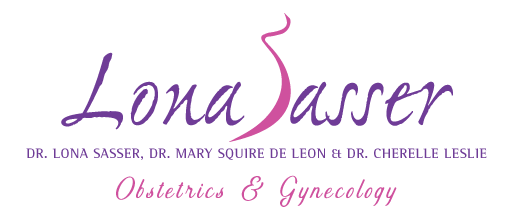Are you experiencing urinary incontinence? We can help.
Urinary incontinence is no fun! It can be frustrating, embarrassing, and disruptive to your life. It can even be dangerous – increasing the risk of falls in older adults who need to rush to the bathroom. But it’s nothing to be ashamed of; urinary incontinence is incredibly common, affecting millions of adults.
You might think that loss of bladder control is an inevitable consequence of aging – when in fact, it’s often treatable. If you’re suffering from urinary incontinence, don’t hesitate to contact the office of Lona Sasser Obgyn to schedule an appointment. Our three top-rated obgyns are taking new patients and would be happy to discuss your symptoms and solutions with you. At our practice in Coral Springs, we care deeply about our patients’ wellbeing and their experience receiving care. Call today: 954-340-1050
Urinary incontinence symptoms
Here are the different types of urinary incontinence and their symptoms, according to the Mayo Clinic:
Stress incontinence. Leaks resulting from pressure exerted on the bladder, i.e. from coughing, laughing, sneezing, exercising, or heavy lifting.
Urge incontinence. When a sudden, strong urge to urinate is followed by involuntary urine loss. Can be caused by a range of conditions or infections. May affect you throughout the day and night.
Overflow incontinence. Frequent dribbling of urine due to a bladder that doesn’t empty completely.
Functional incontinence. When an impairment keeps you from making it to the toilet in time. I.e., if you suffer from severe arthritis, you may not be able to unbutton your pants quickly enough.
Mixed incontinence. You experience more than one type of urinary incontinence.
Source: Mayo Clinic
What causes urinary incontinence?
At your appointment, your doctor will help you identify the cause of the symptoms you are experiencing. Sometimes urinary incontinence is caused by easily-treatable conditions, such as urinary tract infections (UTIs) or constipation. If this is the case for you, we will educate you on your condition and the necessary steps for addressing it.
In other cases, the cause is more complex. Pregnancy, childbirth, aging, menopause, and hysterectomies can all potentially result in weakened pelvic floor muscles and thus diminished bladder control.
Solutions for urinary incontinence
There are many solutions available to address weakened pelvic floor muscles or an overactive bladder. Your doctor may recommend exercises to strengthen the pelvic floor muscles, or medication to address your symptoms. At Lona Sasser Obgyn, we also offer pain-free pelvic floor stimulation therapy – an effective alternative to surgery. A mild electrical current stimulates and strengthens the pelvic floor muscles. This approach may involve multiple appointments over several months.
Lona Sasser Obgyn: Comprehensive Women’s Health Care
In addition to offering compassionate care for urinary incontinence, our team of gynecologists is experienced in a wide variety of women’s health services. From conception to birth, adolescence to menopause and beyond, we are here to support you – helping you stay informed, healthy, and happy. Contact us today to schedule your first appointment by calling 954-340-1050. We can’t wait to meet you!
Helpful Links
Meet Our Team of Gynecologists
Sources for This Article:
Urinary Incontinence – Mayo Clinic
What is electrical stimulation for overactive bladder? – WebMD

